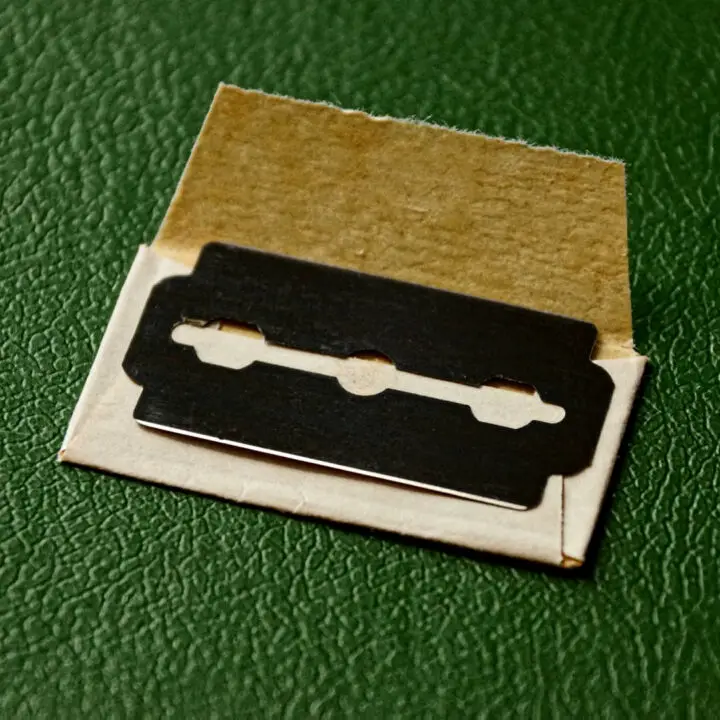
For decades, wet shaving enthusiasts have prized Russian-made razor blades for their sharpness, smoothness, and consistency. Brands like Gillette Platinum, Astra Superior Platinum, and Perma-Sharp, all produced at the renowned St. Petersburg factory, became staples in the shaving kits of many wet shavers. But recent geopolitical events and shifting corporate strategies have brought this era to a close. Where are they being made now? And, perhaps more importantly, how will this shift affect the quality of our daily shave?
Why the Change? The Geopolitics Behind the Blade
The story begins with the Russian invasion of Ukraine in 2022, which triggered a wave of international sanctions and economic restrictions. Multinational companies operating in Russia, including Procter & Gamble (P&G)—the parent company behind Gillette and several other blade brands—faced increasing difficulties. Financial transactions became complicated, supply chains were disrupted, and the political climate grew uncertain.
By 2022, P&G announced it was “winding down” operations at its St. Petersburg factory, the heart of Russian razor blade production. This decision wasn’t made lightly; the factory had a reputation for producing some of the world’s finest double-edge blades, cherished by both everyday shavers and collectors. But with mounting pressures, the company began shifting production other facilities, particularly in India and China.
Where Are Your Favorite Blades Made Now?
Here is a break down on the transition for some of the most popular brands:
| Brand Name | Previous Production | New Production Location |
| Gillette Platinum | Russia (St. Petersburg) | India/China (transitioning) |
| Astra Superior Platinum | Russia (St. Petersburg) | India |
| King C Gillette | Russia | China |
| Perma-Sharp | Russia | (Likely India/China) |
| Gillette 7 O’Clock Green | Russia | India (some variants) |
| Nacet | Russia | China (some batches) |
You might still find Russian-made blades on the market, but these are remnants of old stock (“NOS”). Once they’re gone, all new blades will come from other countries.
The Big Question: Blade Quality

This is the million-dollar question for wet shavers. The short answer is: it depends on where the blades are made and how closely the new factories follow the original manufacturing process.
Indian-Made Blades: A Smooth Transition
The transition to India, particularly for the Astra Superior Platinum (SP), seems to have been surprisingly smooth. Many users who have tried both the Russian and Indian versions report little to no difference in sharpness, smoothness, or longevity. In some cases, the Indian-made blades are even described as slightly sharper or more consistent.
India already has a strong reputation for producing quality razor blades, with brands like SuperMax and Gillette 365 earning high marks from the wet shaving community. If the same machinery and quality control standards are maintained, there’s every reason to believe that Indian-made blades can match, or even exceed, the quality of their Russian predecessors.
Chinese-Made Blades: Mixed Reviews
The story is a bit different with Chinese-made blades. While the initial shave with a Chinese Gillette Platinum may feel similar to the Russian version, many users report that the blade loses its edge more quickly. Instead of getting four or five comfortable shaves from a single blade, some users find they need to swap it out after just one or two.
There are also concerns about consistency and quality control. While China is capable of producing excellent blades, the transition period often brings variability as factories ramp up production and fine-tune their processes. Packaging changes, such as different etching or labeling, have also been noted, though these don’t directly affect performance.
The Role of Quality Control
One of the key factors in this transition is quality control. If P&G and other manufacturers move their original machinery and maintain strict oversight, the new blades could be nearly indistinguishable from the old ones. However, if corners are cut or standards slip, users will notice the difference.
The wet shaving community is nothing if not discerning. Forums and review sites are already buzzing with side-by-side comparisons, and manufacturers know that their reputation is on the line. In the long run, consumer feedback will play a crucial role in ensuring that quality remains high.
The Future of Wet Shaving

While the end of Russian-made blades marks the close of a chapter, it’s not the end of quality wet shaving. India, China, Turkey, and, yes, even the USA have the capacity to produce excellent blades, and competition may even spur innovation and improvements. For now, the best advice is to stay informed, try the new blades for yourself, and share your experiences with the community.
If you’re nostalgic for the “Russian feel,” it might be worth picking up a few extra packs while you still can. But don’t be afraid to embrace the new generation of blades—they may surprise you.
Final Thoughts
Change is never easy, especially when it comes to something as personal as your daily shave. But with a little openness and a willingness to experiment, you may find that the next great blade is just around the corner—no matter where it’s made.
Have you tried the new Indian or Chinese-made blades? Share your experiences in the comments below!

I quit using Gillett products many years ago. Right after the “Toxic Male” commercials. Since I might be “toxic,” I certainly don’t want to offend Gillett by buying their product. I switched to Feather. They’re better anyway.
Mark I had to laugh a bit. If I boycotted every company whose commercial I didn’t like/insulted or offended me, I’d have to make all my own stuff and probably the building materials as well.
For me it’s mostly dishonesty and inanity
But f
I agree, but not all companies go out of their way to insult half the population of the world. Then…when there’s backlash, double down by releasing a second advertisement insulting the same group of humans.
F*** Gillett and the horse they rode in on.
PLUS…Feather blades are better.
I guess I should thank Gillett for being woke idiots. They drove me to a better shave. I bought 100 feather blades for, as I recall, $20. 100 blades will last me for years.
Gillette Nacet blades have been the go-to for my brass Karve Christopher Bradley with a C-plate. When the “special action” broke out, I stocked up and can get by for several months, yet. Knowing I likely will need to switch preferences, I’ve been pleased to realize I’ve been “at this” long enough that I can load a Feather without adverse consequences.
Is there a verdict on new Nacet’s yet?
My bummer is that I like Voskhod blades in my open combs. These are made in Moscow, not St. Petersburg. In a true Russian plant. (Unless I’m all wrong, it has happened once before) With the anti Russian sentiment, what will the availibilty be in the future?
I agree the Voshkods are my favourite blades. I am hoping cooler heads eventually prevail, and we can get back to being normal again.
Quick question,, Otto. Any idea what has become of Polsilver Super Iridium blades? I know their manufacturer moved from Poland to Russia years ago, but what about more recently? I’ve also heard there are a lot of fakes out there now. I was under the impression that legit SI’s were no longer being produced, but now I see they are quite available from reputable shaving supply companies.
Anyway, I thought you might have some info on, what for a long time was one of the most revered blades in wet shaving.